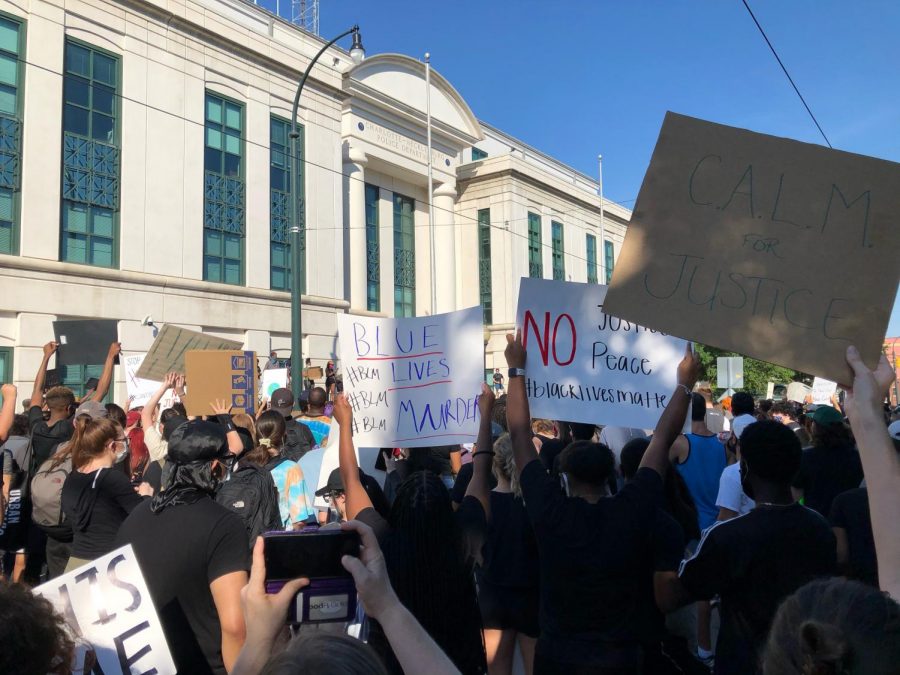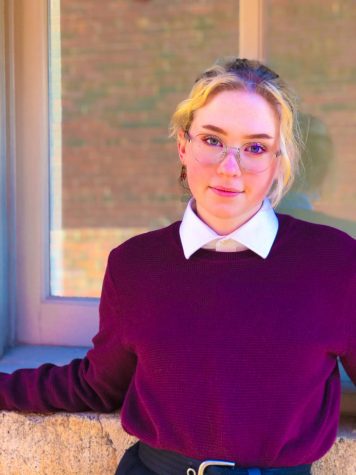Activism in the digital age: how the fight changes with us
March 17, 2021
For hundreds of years, American people have been fighting against the injustices in our systems. From King Philip’s War, a battle between Native groups and British colonies to stop colonization, in 1675 to the 1969 Stonewall Riots, queer people coming together in New York City to combat homophobia and transphobia, civil disobedience seems to be one of the biggest forces that brings people together.
Many of the issues activists fight are older than the activists themselves. Racial injustice, homophobia, and religious persecution are all things that date far back into American history and are still being battled today. Recently, there has been a resurgence in the fight for racial justice, more specifically the Black Lives Matter (BLM) movement.
The organization was founded in 2013 by Patrisse Cullors, Alicia Garza and Opal Tometi following the murder of Trayvon Martin. The BLM Network is largely focused online, using a strong social media presence to connect those working with it. This platform is something that grew in recent years and is affecting the way people protest.
Activist and SV alumni Ayo Jaiyeoba organized a peaceful protest at Sun Valley Commons in June of 2020 in support of Black Lives Matter. George Floyd and Breonna Taylor were two individuals murdered by law enforcement officers earlier that year and their stories helped spark the resurgence of the BLM movement.
“I had to take action. So many times we feel as if we aren’t doing enough and that was mainly the reason for me to push through with the protest,” Jaiyeoba said. “I believed that action had to be taken and movements had to be made to show that these Black Lives Matter!”
Jaiyeoba’s protest was one of many made accessible to supporters through social media.
“The process [of organizing the protest] was actually easy, it all came together nicely. I had a friend Evan [Bieler] who was interested in doing this, so he said he would call the stores around the area and let them know we would be there for a couple of hours,” Jaiyeoba said. “We made a flyer and posted it online on every social media [site], and God did the rest for us! It reached teachers on Facebook and even the [local] news.”
Social media has made information of all kinds more accessible, aiding the fight for racial justice.
“I think that the spread of information over social media apps like Instagram and Twitter have really helped people [get] involved in activism,” senior Sarah King said. “There aren’t many people now who watch the news on a regular basis to know what’s happening in their own country and the world.”
Users on various sites and apps are able to make quick and digestible content geared towards teens. Short videos on TikTok can explain a specific situation to the audience in under 60 seconds.
“Videos and posts about what’s going on with protests and speaking out about these injustices have surfaced through all forms of social media, which brings to light what’s actually happening in these situations,” King said. “With all of these aspects of social media and being able to record what’s happening in front of you, I believe that this gives people an idea of these racial injustices that occur on a daily basis.”
TikTok users melanin_junie19, alluringskull, and ellamiller2019 are some of many individuals who make such videos. When you visit their pages, one of the first things you notice are their bios. The common thread between the accounts is a Linktree linked in their bio. This site allows users to make personalized pages where they can link their social media accounts. These specific creators use their Linktrees to provide petitions and resources to any who visit their pages.
“We are able to reach out to others and provide help to those who need it, like through GoFundMe and links provided that you are able to sign for specific causes,” King said. “These resources have definitely helped out a lot with getting the word out and helping these movements get the resources they need.”
The rapid spread of information does have downsides. News and stories found online do not always come from reliable sources. While stories may not be entirely fabricated, misinformation still spreads throughout platforms. In addition to this, those participating in activism may be overloaded with information and begin to feel overwhelmed or burnt-out.
“To those who feel burnt-out, I would definitely say take regular social media breaks. The world is dangerous, and people are killed and [harmed], especially in the BLM movement,” Jaiyeoba said. “I would say this is the downside of social media[,] since everything is shared we also share the hardships and lack of change.”
The BLM Network is continuing the fight against police brutality and racism in America, but the focus of the fight has shifted to the Asian-American community. Online and on the streets, Asian people of all ages have been facing violent crimes in direct response to COVID-19.
On Jan. 28, an 84-year-old Asian man, Vicha Ratanapakdee, was shoved and badly injured by a young man in a race-based assault. Ratanapakdee died two days after the assault. Antoine Watson, the 19-year-old alleged assailant, was charged with murder and elder abuse, which he pleaded not guilty to.
In response, Oakland native and activist Jacob Azevedo reached out to the Asian community in the area on social media and offered to walk with them through town to help them feel safe. Volunteers walk with those who feel unsafe anywhere they need to go, whether it be work or the grocery store. After this offer went semi-viral, many others joined Azevedo. He created a nonprofit called Compassion in Oakland where he has over 300 people volunteering to walk with him.
“There is one thing I’d like to touch on, which is the racism in America towards the Asian-American community. Although the BLM movement is very big and was something that we needed to talk about, I feel as though the Asian community in America needs our help,” King said. “As a group, we need to reach out to each and every community that is facing the harsh realities of being a minority in America.”


